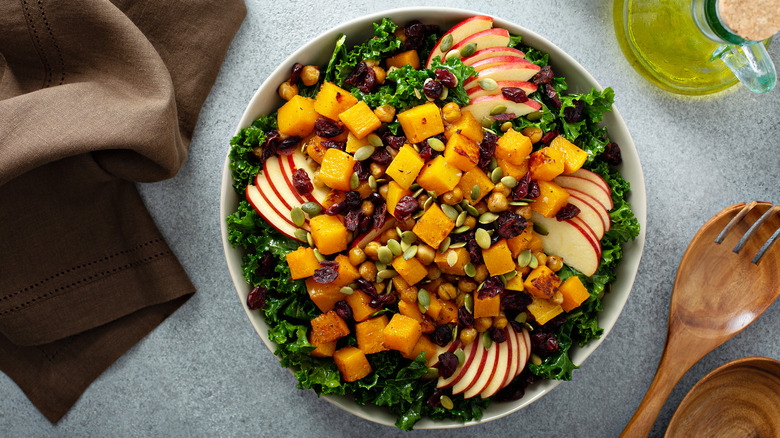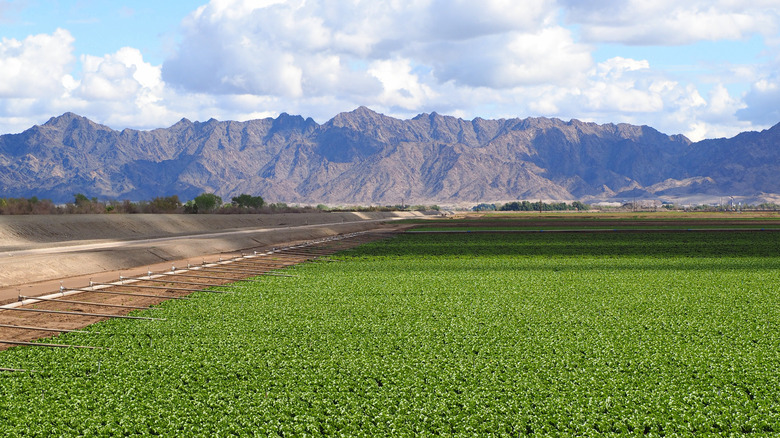Why Yuma County, Arizona Is Called The 'Winter Salad Bowl Capital'
It turns out a whole lot of U.S. leafy greens come from the American Southwest. California's Salinas Valley, for example, is known as the "Salad Bowl of the World," and there's a compelling reason for that. It's one of the Golden State's top regions in terms of agricultural output, according to World Atlas. In addition to broccoli, celery, grapes, strawberries, and tomatoes, Salinas Valley cultivates lettuce and spinach, providing the cornerstones of salads enjoyed across the nation. Nearly 50% of U.S. lettuce and about 33% of U.S. spinach are grown in that valley, per the University of California, Davis. However, those are most likely found in your summer salads. This is because, according to Gardening Know How, Salinas Valley's greens season runs from spring to fall. What about winter?
That's where Yuma County, Arizona comes in. Yuma has long been a gift from Mother Nature. Before the Colorado River was dammed in the 20th century, the future site of Yuma City was the easiest spot around from which to cross that waterway. Indigenous people like the Quechan and Cocopah have thrived in the area for generations. Long before the modern city of Yuma was founded, the Quechan tribe grew beans, corn, and squash near the river (via Visit Yuma). Different crops dominate these days, but the fact that the land is fertile hasn't changed. This fertility is somewhat unique. Unlike much of the U.S., its growing season isn't restricted to planting in spring, growing in summer, and harvesting in fall.
Yuma grows the most wintry, leafy greens
Yuma County ranks high in output for many agricultural goods, per the Arizona Farm Bureau. The most impressive of these stats is responsible for its title: Winter Salad Bowl Capital. According to that same source, the county grows nearly 100% of the leafy greens U.S. residents eat throughout the coldest season of the year.
In addition to being well-irrigated, Yuma is super sunny. The city's even called the Sunniest City in the World since it holds a Guinness World Record for most sunshine. This region is truly a desert, as it receives only three inches of rain a year, per HuffPost. That's why it's so crucial that the Colorado River is nearby to supply the water needed for farming salad veggies, amongst other commodities.
This unique environment allows growers to rotate crops, reusing the same fields a couple of times each year. Thus, winter growth becomes viable. This $4-billion-a-year agricultural sector is responsible for over 90% of North American-grown leafy greens during the winter. Not just the U.S. but the entire continent. That includes baby greens, kale, and lettuce, while other crops like broccoli, cauliflower, and root vegetables are also grown in the wintertime. During the summertime, dates, lemons, and melons are also raised (via Visit Yuma). Still, the real prizes are the winter salads Yuma produces. If you're ever driving through the Sunniest City in the World, give the Winter Salad Bowl Capital our thanks for keeping the winters so green.

